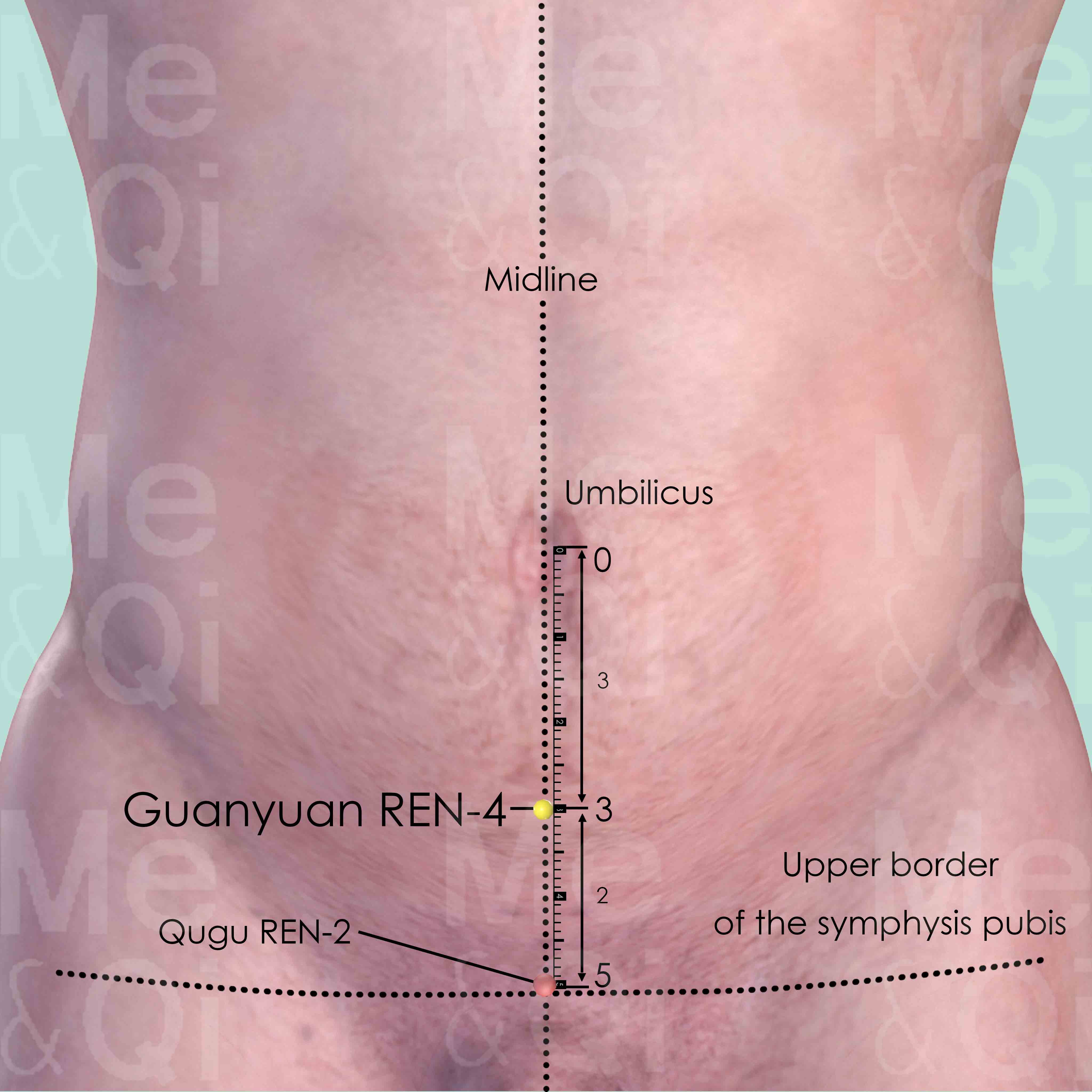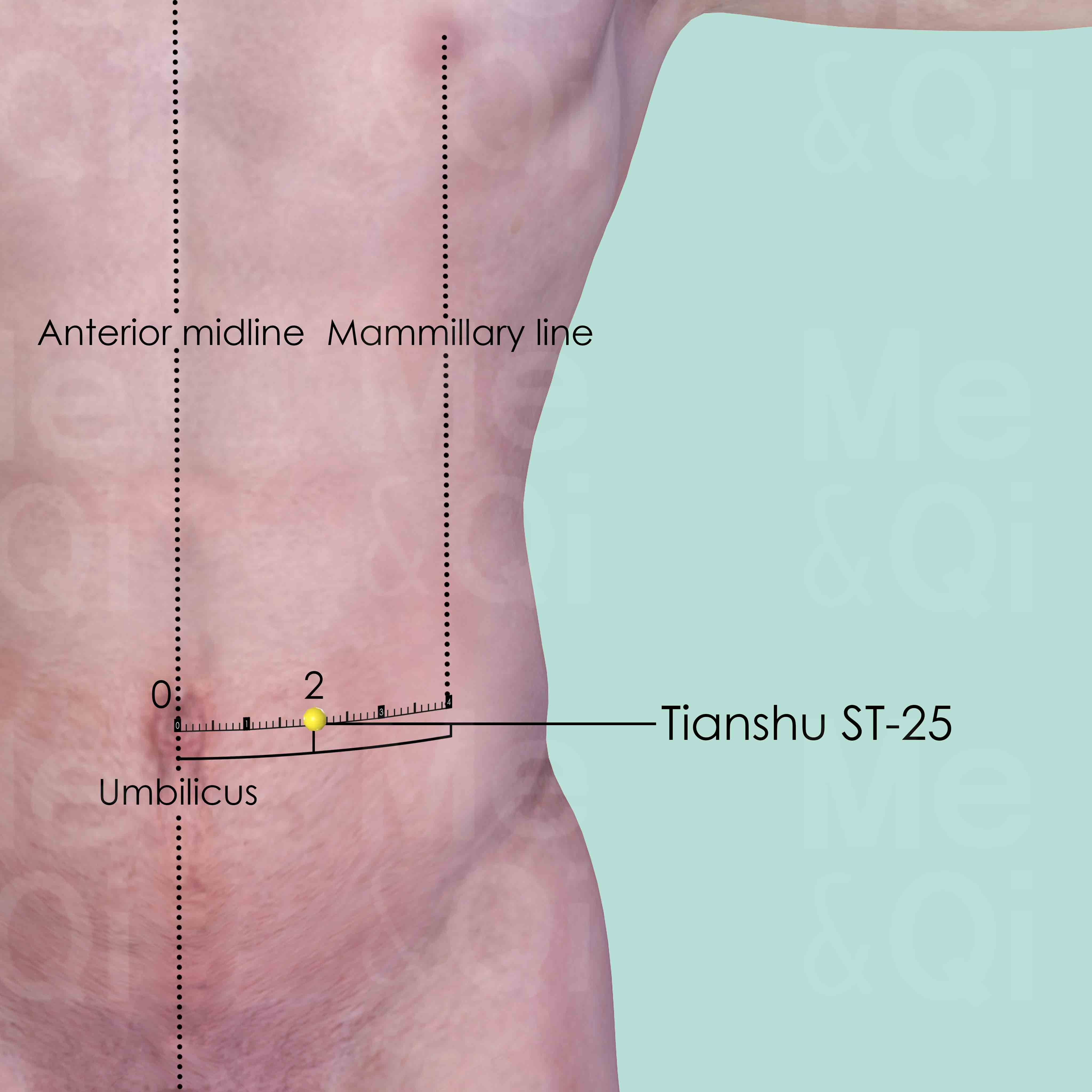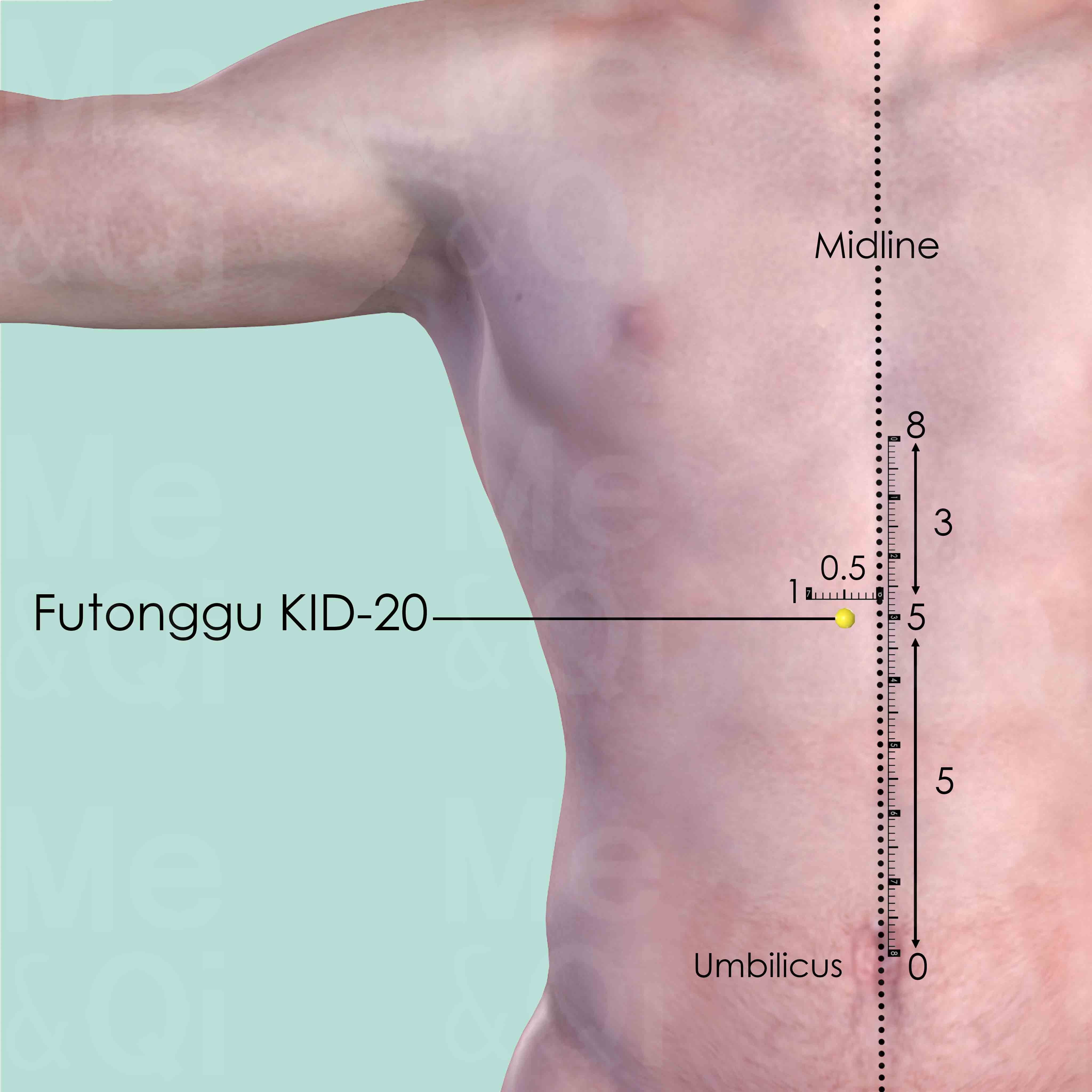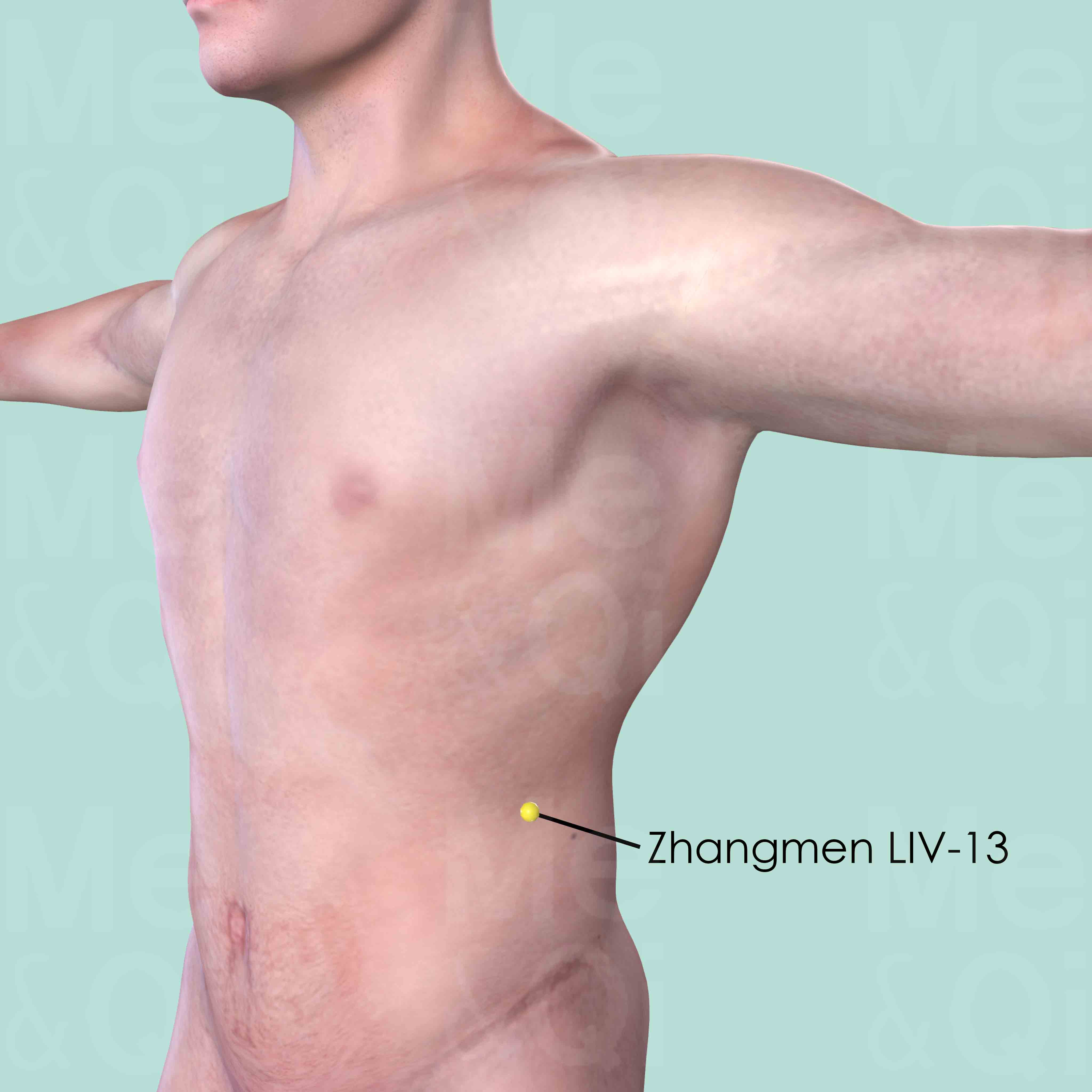Undigested Food In Stoolsaccording to TCM
Symptom family: Stool and Bowel Irregularities
What is Undigested Food in Stools?
Undigested food in stools refers to the occurrence of visible food particles in feces, indicating incomplete digestion. This symptom suggests that food has passed through the digestive tract without being fully broken down. Commonly, it points to issues with digestion where the body is unable to extract nutrients effectively from consumed food.
This condition is not only uncomfortable but also signals that the body is not absorbing all the nutrients it needs, which can lead to various health issues if not addressed.
How does TCM view Undigested Food in Stools?
Traditional Chinese Medicine (TCM) perceives undigested food in stools as a sign of disharmony within the body's digestive system. According to TCM, this symptom is often associated with a Deficiency or imbalance in the Spleen and Stomach's Qi, which are vital for the digestion and absorption of nutrients.
TCM emphasizes the importance of identifying and treating the underlying patterns of disharmony that lead to this symptom, rather than just addressing the symptom itself. This holistic approach aims to restore the body's balance and improve its natural digestive functions.
Root Causes of Undigested Food In Stools in TCM
In TCM, two primary patterns linked to undigested food in stools are Spleen Yang Deficiency and Yang Deficiency or Empty Yang. Spleen Yang Deficiency is characterized by symptoms such as slight abdominal distension after eating, general weakness, a desire to lie in a fetal position, pale face, cold extremities, and chills, alongside the presence of undigested food in stools.
The Yang Deficiency or Empty Yang pattern shares similar symptoms, including a general cold feeling, pale urine, and abdominal pain relieved by pressure and warmth, indicating a profound deficiency in the body's warming and active principle, Yang, leading to impaired digestive functions.
Explore below more details about what might cause Undigested food in stools according to TCM.
- By Syndrome
- By Organ
- Yang Deficiency
- Spleen
Yang Deficiency
Yang deficiency in TCM refers to a state where the body's Yang energy, which is responsible for warmth, activity, and function, is weakened or diminished. This pattern of disharmony often arises from chronic illness, aging, or inherent constitutional weakness. Symptoms of Yang deficiency are typically associated with cold and sluggishness, such as a feeling of coldness, cold extremities, pale complexion, low energy or fatigue, and a desire for warmth. Digestive issues like poor appetite, loose stools, and water retention can also be indicative of Yang deficiency.... see more
Yang Deficiency Patterns That Can Lead to Undigested Food In Stools
Common Symptoms: General Weakness Pale Face Cold Extremities Chills Abdominal Pain Relieved By Pressure And Warmth Diarrhea Edema Generalized Fatigue
| Pattern Name | Relevant Symptoms | Relevant Formulas |
|---|---|---|
| Spleen Yang Deficiency | Undigested food in the stools, Slight abdominal distension after eating, General weakness, Desire to lie in fetal position, Pale face, Cold extremities, Chills, Undigested food in stools, Excessive gas and flatulence, Bloated abdomen, Abdominal pain relieved by pressure and warmth, Dull shallow face... see more | Zhen Wu Tang | Bu Zhong Yi Qi Tang | Yi Huang Tang | Huang Tu Tang | Wen Pi Tang |
| Yang Deficiency or Empty Yang | Undigested food in the stools, Chills, General cold feeling, Pale urine, Undigested food in stools, General weakness, Abdominal pain relieved by pressure and warmth, Frequent urination, Polyuria, Nocturia, White vaginal discharge... see more | Ba Wei Di Huang Wan | You Gui Wan | Ban Liu Wan |
Spleen
In TCM the Spleen plays a vital role in digestion and transformation, converting food into energy and nutrients, and overseeing the distribution of Qi and Blood. It's also crucial in maintaining the health of muscles and limbs and ensuring the blood remains within the vessels. When the Spleen malfunctions in TCM, it can lead to a variety of issues such as digestive disorders, fatigue, weak muscles, bloating, and a feeling of heaviness. It can also cause a pale complexion, poor appetite, and a tendency to bruise easily. Emotionally, a Spleen imbalance is often associated with excessive worry or overthinking, reflecting its role in the interplay between physical and mental health.... see more
Spleen Patterns That Can Lead to Undigested Food In Stools
| Pattern Name | Relevant Symptoms | Relevant Formulas |
|---|---|---|
| Spleen Yang Deficiency | Undigested food in the stools, Slight abdominal distension after eating, General weakness, Desire to lie in fetal position, Pale face, Cold extremities, Chills, Undigested food in stools, Excessive gas and flatulence, Bloated abdomen, Abdominal pain relieved by pressure and warmth, Dull shallow face... see more | Zhen Wu Tang | Bu Zhong Yi Qi Tang | Yi Huang Tang | Huang Tu Tang | Wen Pi Tang |
TCM Herbal Formulas for Undigested Food In Stools
For treating Spleen Yang Deficiency, the formula Zhen Wu Tang, containing Prepared aconite (Zhi Fu Zi), is recommended. This formula warms and transforms water and dampness, addressing the root cause by boosting the Yang energy needed for efficient digestion.
In cases of Yang Deficiency or Empty Yang, Ba Wei Di Huang Wan is suggested. This formula, with Prepared rehmannia (Shu Di huang) as a key component, nourishes the Yin and tonifies the Yang, aiming to restore balance and improve digestive health by enhancing the body's ability to process and absorb nutrients.
Explore below some TCM herbal formulas used to address undigested food in stools, organized by cause and by formula type.
- By Cause
- By Formula Type
- Yang Deficiency
- Formulas that warm and purge
- Formulas that warm and transform water and dampness
- Formulas that tonify qi
- Formulas that secure irregular uterine bleeding and stop vaginal discharge
- Formulas that stop bleeding
- Formulas that nourish yin and tonify
- Formulas that warm yang and tonify
Top Formula for Yang Deficiency:
Zhen Wu Tang
Suitable for Yang Deficiency patterns that may cause undigested food in stools, such as Spleen Yang Deficiency
Learn moreAll Formulas Recommended for Undigested Food In Stools Caused by Yang Deficiency
| Formula | Patterns Suitable For |
|---|---|
| Zhen Wu Tang | Spleen Yang Deficiency |
| Bu Zhong Yi Qi Tang | Spleen Yang Deficiency |
| Yi Huang Tang | Spleen Yang Deficiency |
| Huang Tu Tang | Spleen Yang Deficiency |
| Wen Pi Tang | Spleen Yang Deficiency |
| Ba Wei Di Huang Wan | Yang Deficiency or Empty Yang |
| You Gui Wan | Yang Deficiency or Empty Yang |
| Ban Liu Wan | Yang Deficiency or Empty Yang |
Formulas that warm and purge
These formulas are suitable for some undigested food in stools-causing patterns like Spleen Yang Deficiency.
One such formula is Wen Pi Tang, with prepared aconite as a key herb.
Other formulas of this category are listed in the table below.
All "formulas that warm and purge" recommended for undigested food in stools
| Formula | Patterns Suitable For (if applicable) |
|---|---|
| Wen Pi Tang | Spleen Yang Deficiency |
| Ban Liu Wan | Yang Deficiency or Empty Yang |
Formulas that warm and transform water and Dampness
These formulas are suitable for some undigested food in stools-causing patterns like Spleen Yang Deficiency.
One such formula is Zhen Wu Tang, with prepared aconite as a key herb.
Formulas that tonify Qi
These formulas are suitable for some undigested food in stools-causing patterns like Spleen Yang Deficiency.
One such formula is Bu Zhong Yi Qi Tang, with milkvetch root as a key herb.
Formulas that secure irregular uterine bleeding and stop vaginal discharge
These formulas are suitable for some undigested food in stools-causing patterns like Spleen Yang Deficiency.
One such formula is Yi Huang Tang, with yam as a key herb.
Formulas that stop bleeding
These formulas are suitable for some undigested food in stools-causing patterns like Spleen Yang Deficiency.
One such formula is Huang Tu Tang, with stove earth as a key herb.
Formulas that nourish Yin and tonify
These formulas are suitable for some undigested food in stools-causing patterns like Yang Deficiency or Empty Yang.
One such formula is Ba Wei Di Huang Wan, with prepared rehmannia as a key herb.
Formulas that warm Yang and tonify
These formulas are suitable for some undigested food in stools-causing patterns like Yang Deficiency or Empty Yang.
One such formula is You Gui Wan, with prepared aconite as a key herb.
Acupoints for Undigested Food In Stools
TCM also recommends specific acupoints to support treatment, including Fuai SP-16 and Gongsun SP-4, which regulate the intestines and harmonize the Spleen, Stomach, and Intestines. Shangqiu SP-5 and Shidou SP-17 are also beneficial, focusing on removing channel obstructions and resolving food stagnation.
Additionally, points like Dachangshu BL-25 and Gaohuangshu BL-43 on the Bladder Channel support the Large Intestine and strengthen the Spleen and Stomach, respectively. These acupoints, when stimulated, can enhance digestive functions and help address the issue of undigested food in stools.
Explore below some acupoints used to address undigested food in stools, organized by meridian.
- By Meridian
- Spleen Channel
- Bladder Channel
- Directing Vessel
- Stomach Channel
- Kidney Channel
- Large Intestine Channel
- Governing Vessel
- Liver Channel
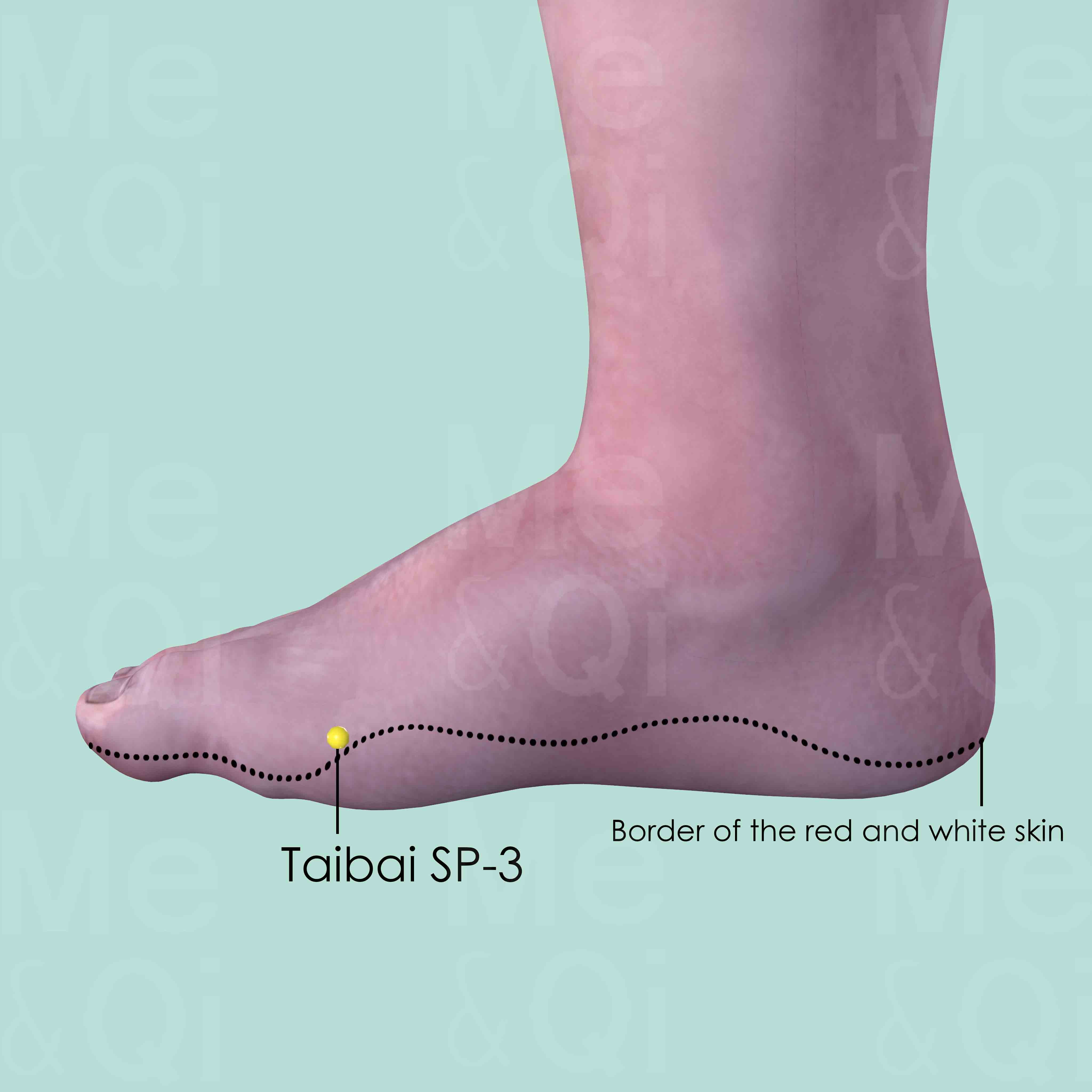
Taibai SP-3
Proximal and inferior to the head of the 1st metatarsal bone, at the border of the red and white skin.
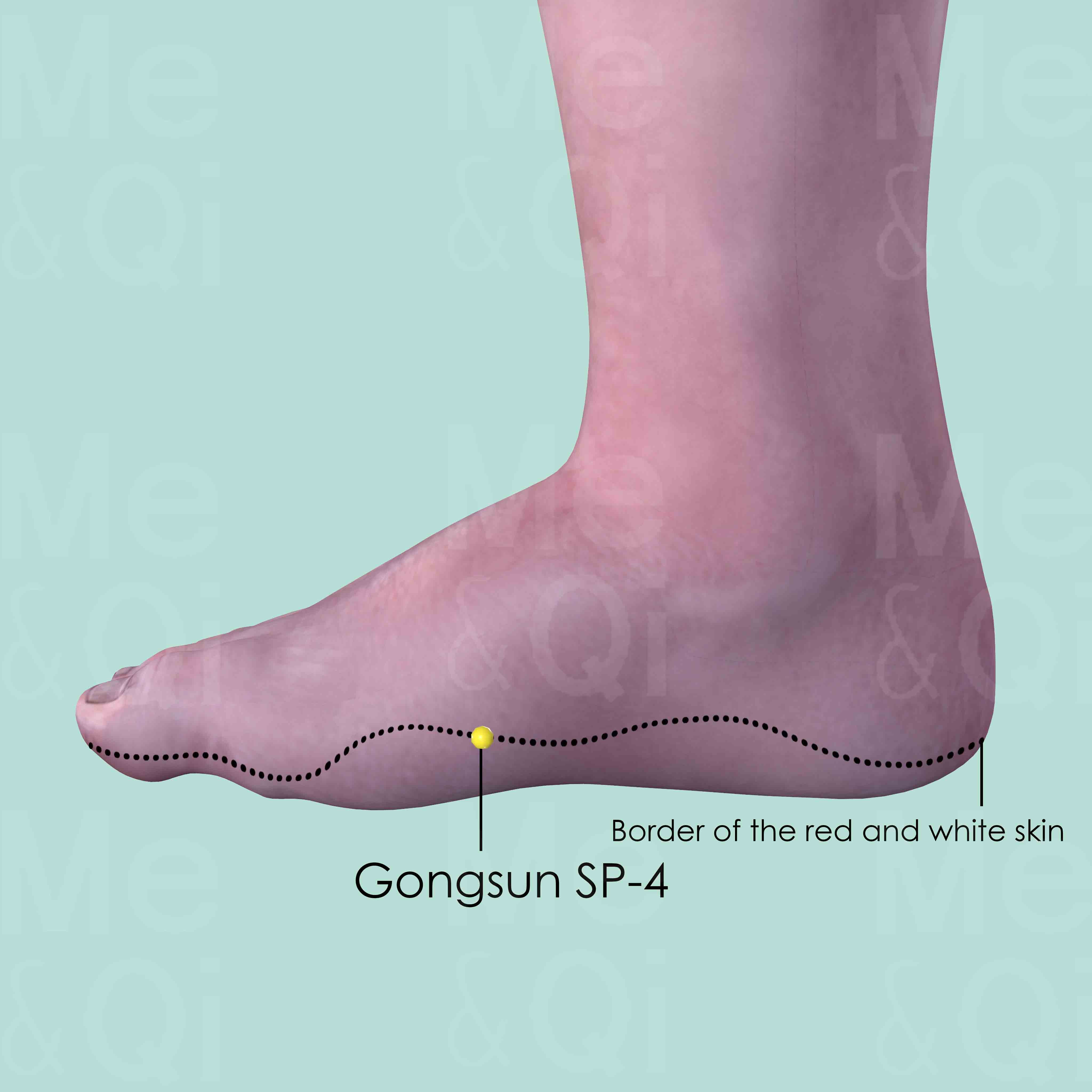
Gongsun SP-4
In the depression distal and inferior to the base of the 1st metatarsal bone, at the border of the red and white skin.
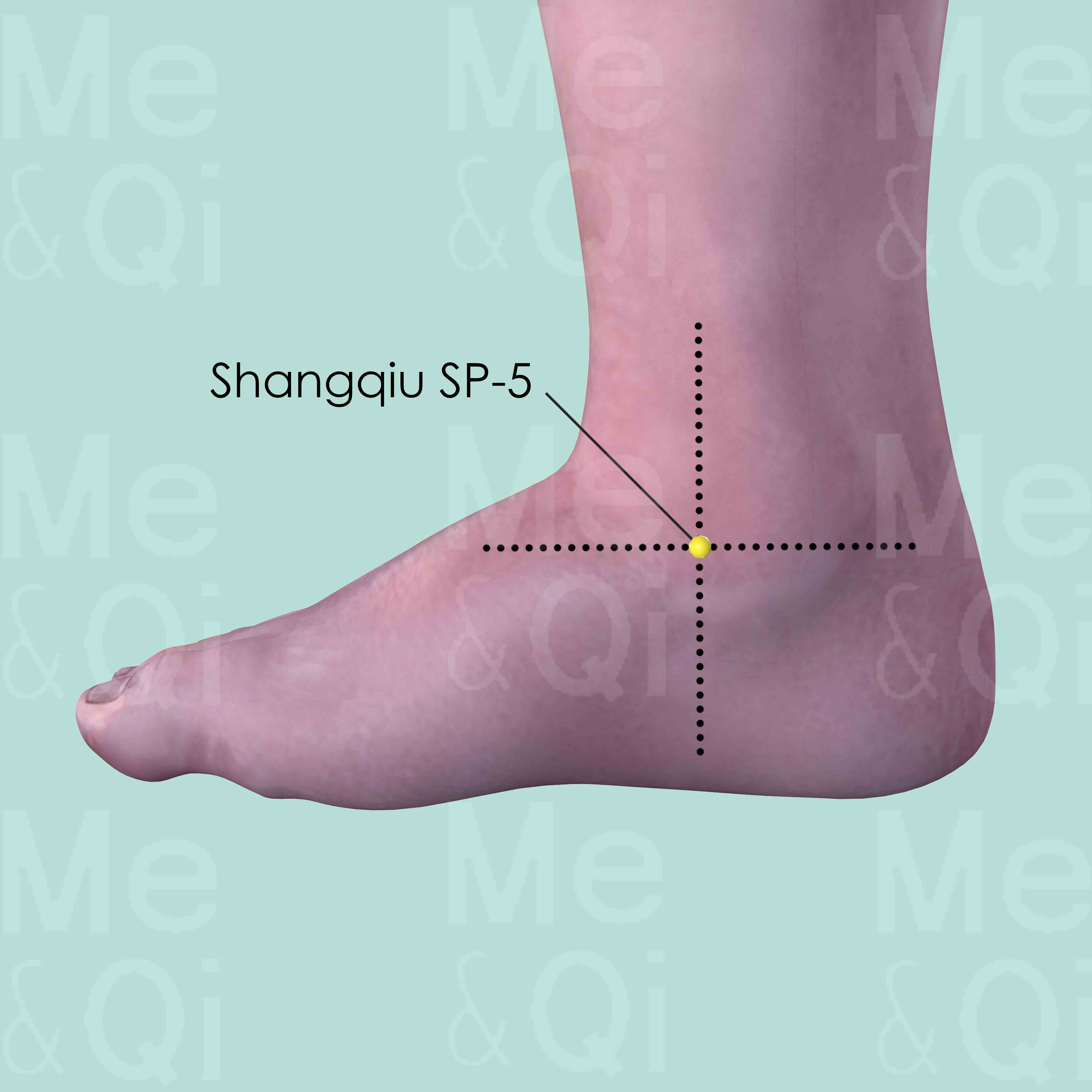
Shangqiu SP-5
In the depression distal and inferior to the medial malleolus, midway between the navicular bone tubercle and the tip of the medial malleolus.
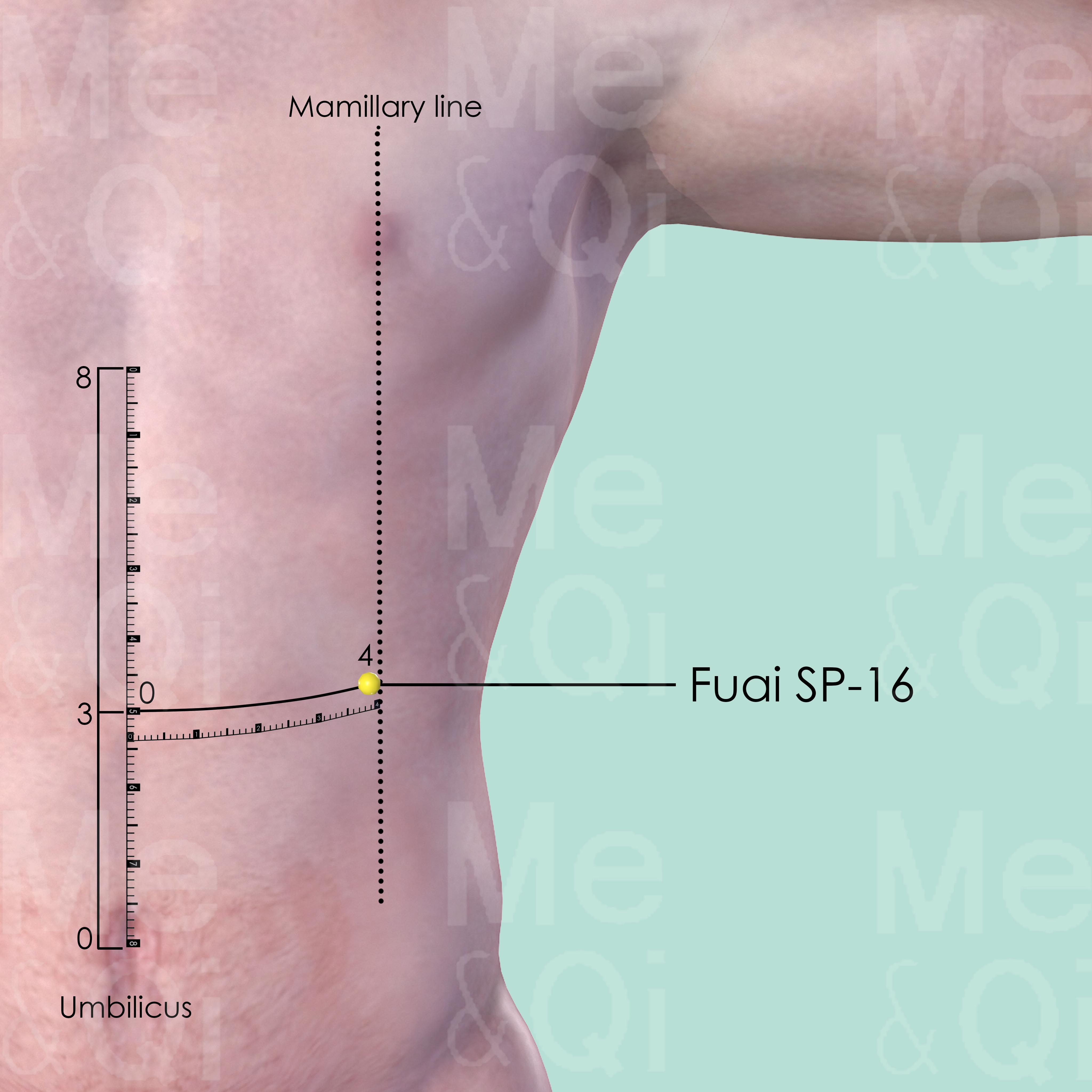
Fuai SP-16
3 cun above the umbilicus center and 4 cun lateral to the anterior midline, on the mamillary line.
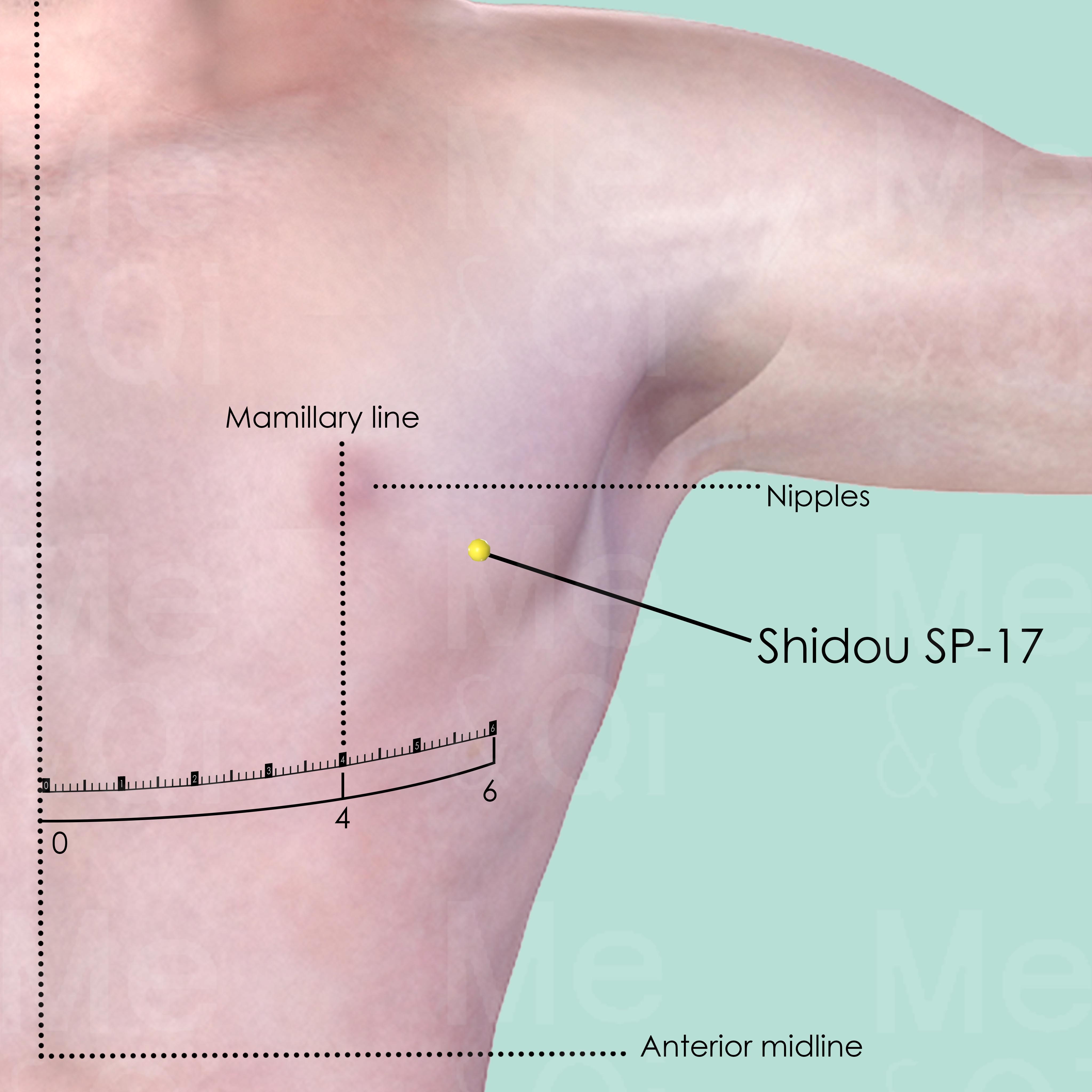
Shidou SP-17
6 cun lateral to the anterior midline, 2 cun lateral to the mamillary line, in the 5th intercostal space.
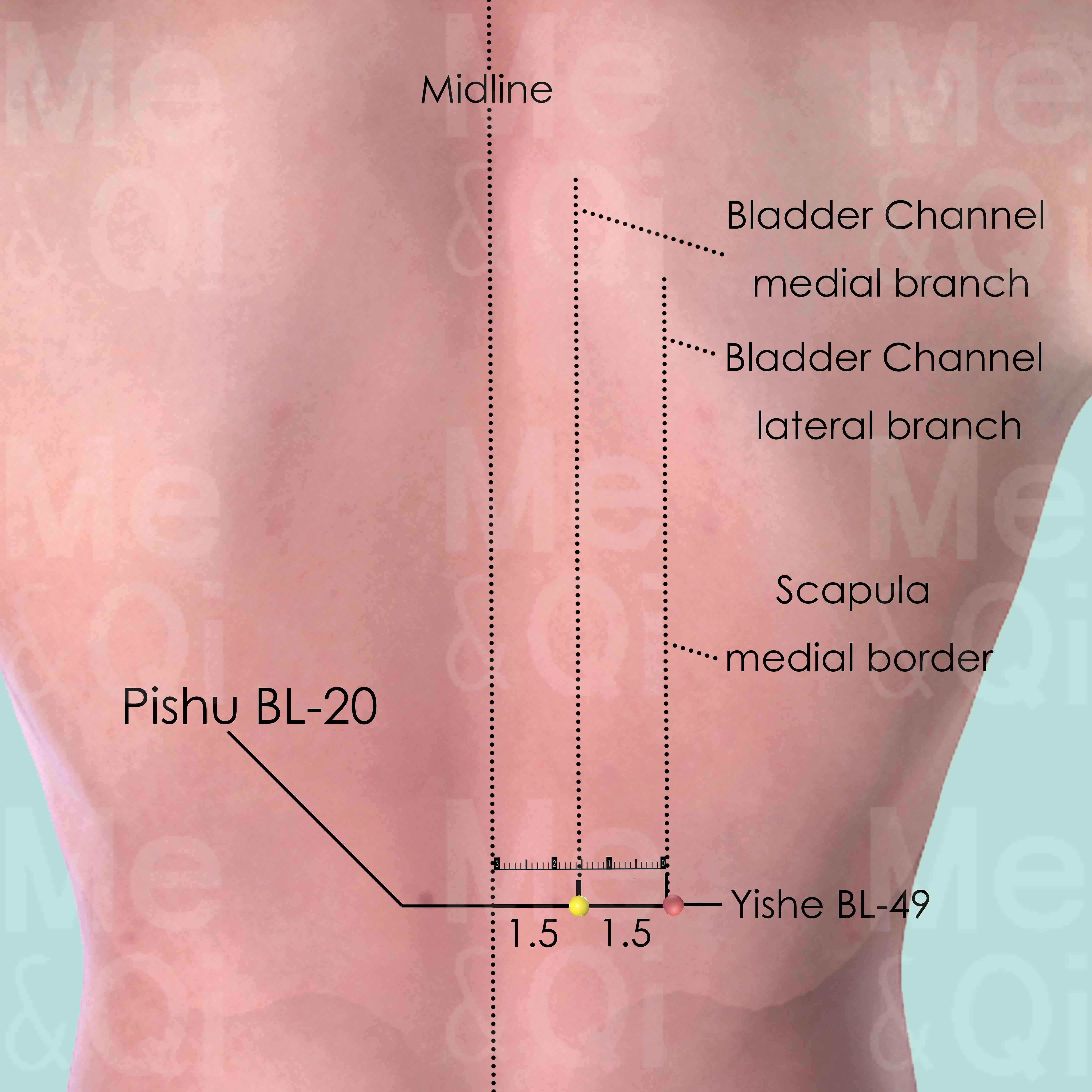
Pishu BL-20
1.5 cun lateral to the lower border of the spinous process of the 11th thoracic vertebra (T11).
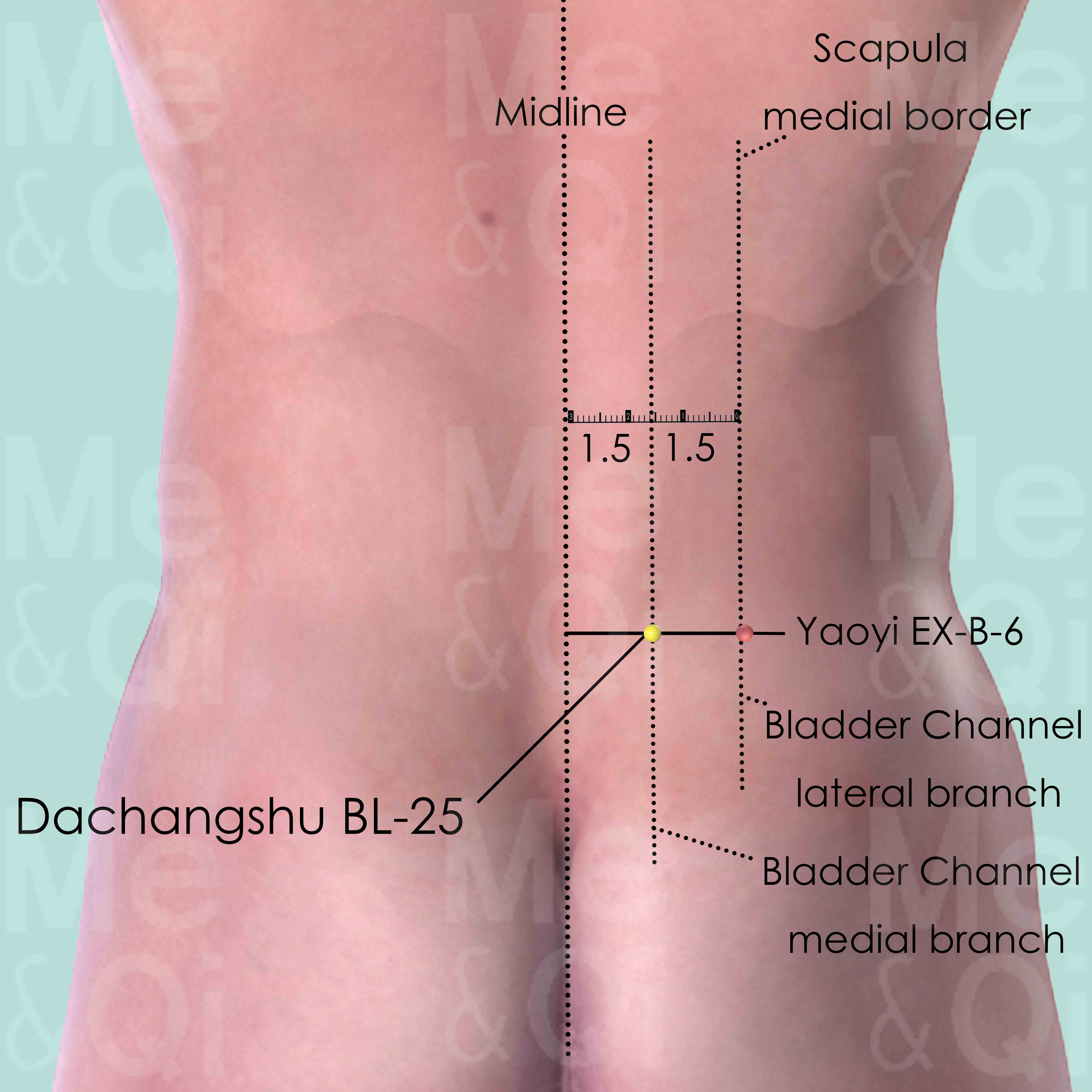
Dachangshu BL-25
1.5 cun lateral to the lower border of the spinous process of the 4th lumber vertebra (L4).
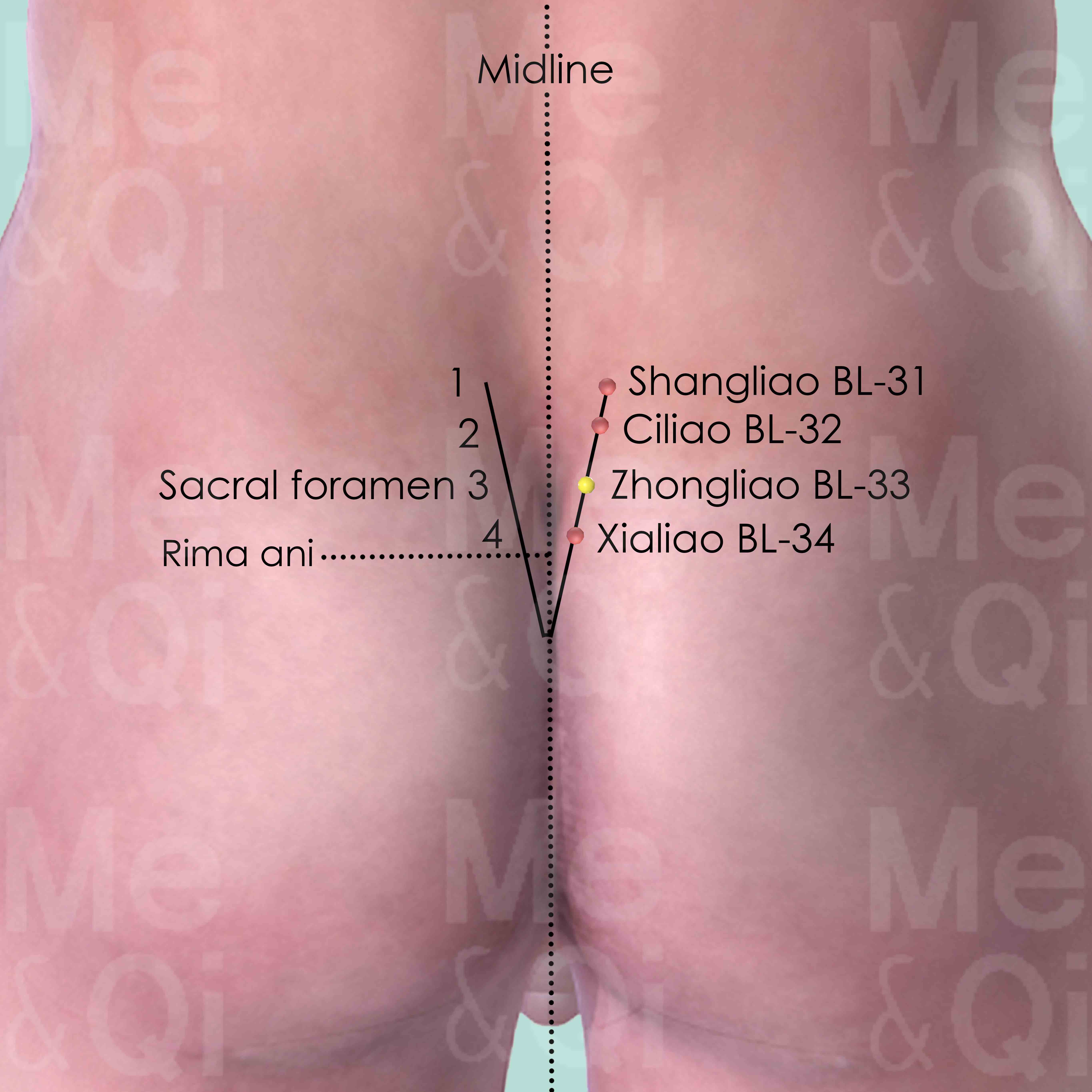
Zhongliao BL-33
In the 3rd posterior sacral foramen, between the posterior superior iliac spine and the midline.
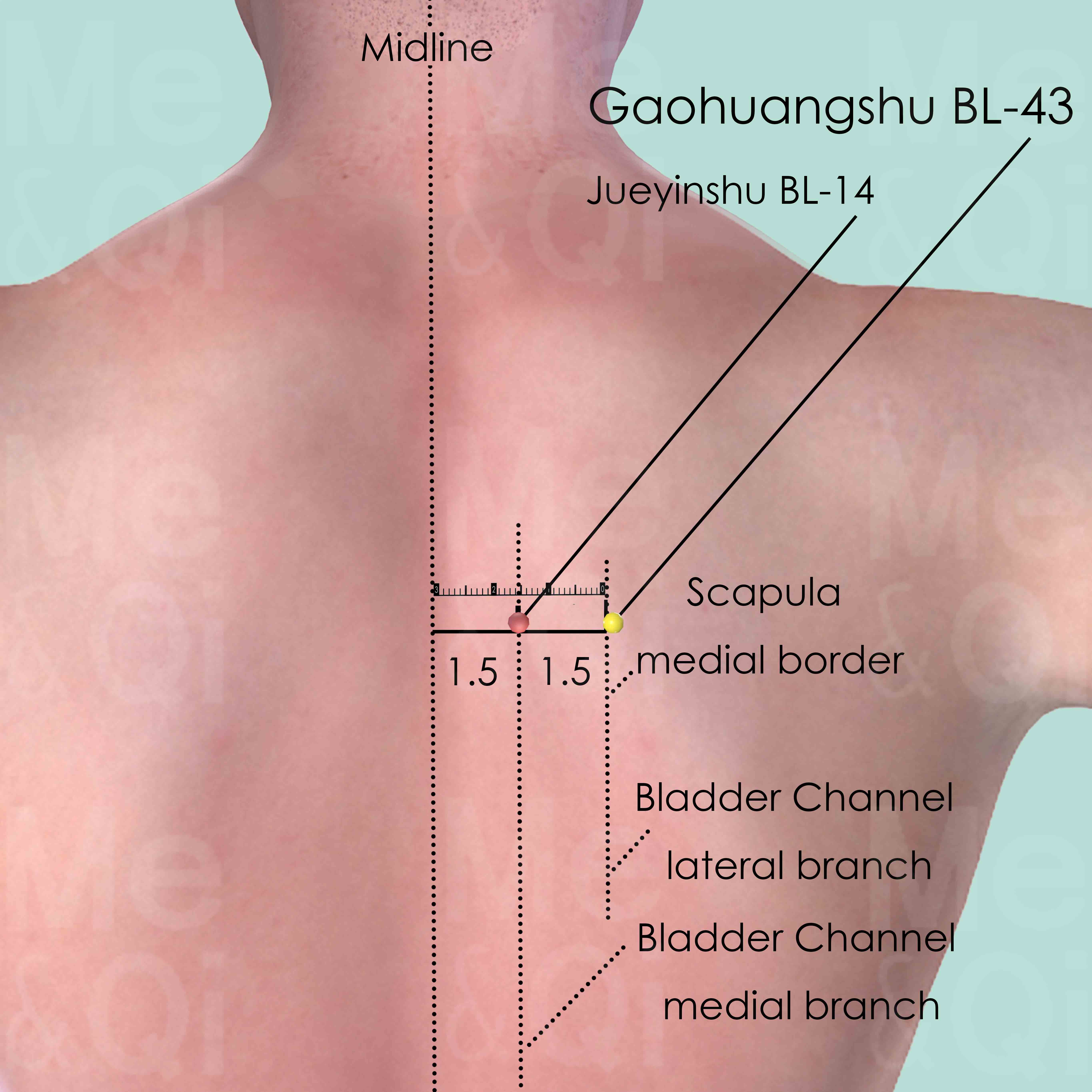
Gaohuangshu BL-43
3 cun (about 4 finger-breadths) lateral to the lower border of the spinous process of the 4th thoracic vertebra (T4).
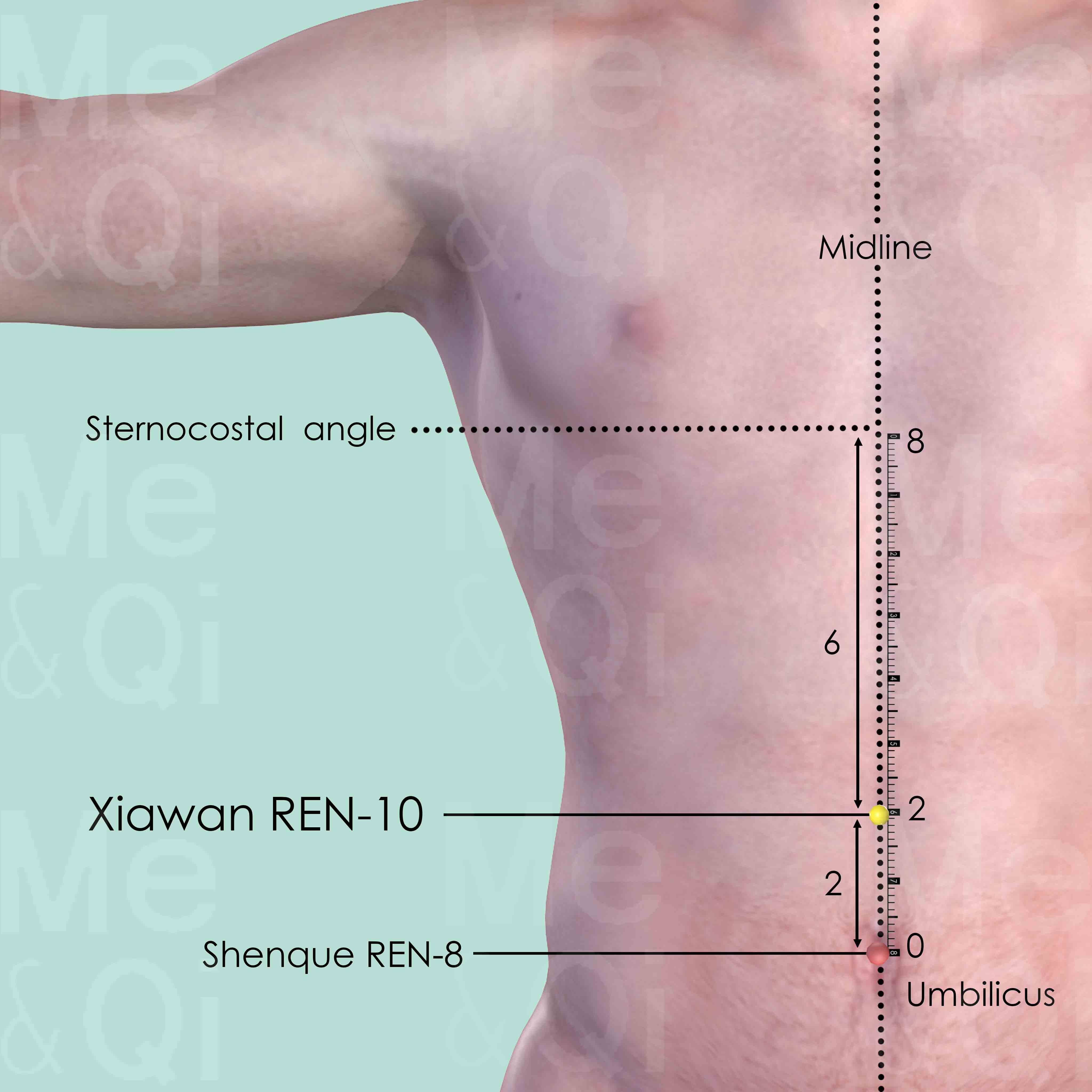
Xiawan REN-10
On the midline of the abdomen, 2 cun above the umbilicus and 6 cun below the sternocostal angle.
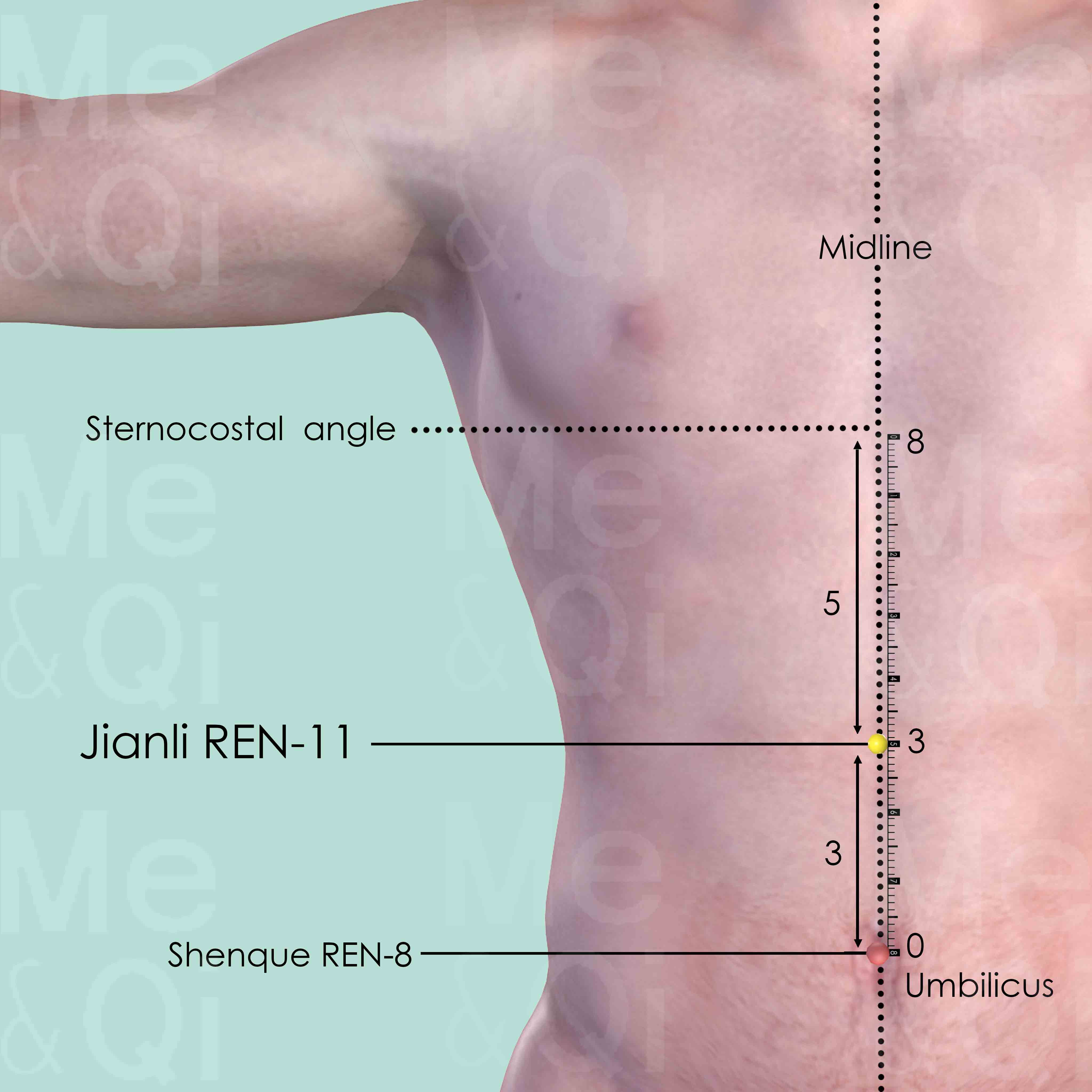
Jianli REN-11
On the midline of the abdomen, 3 cun above the umbilicus and 5 cun below the sternocostal angle.
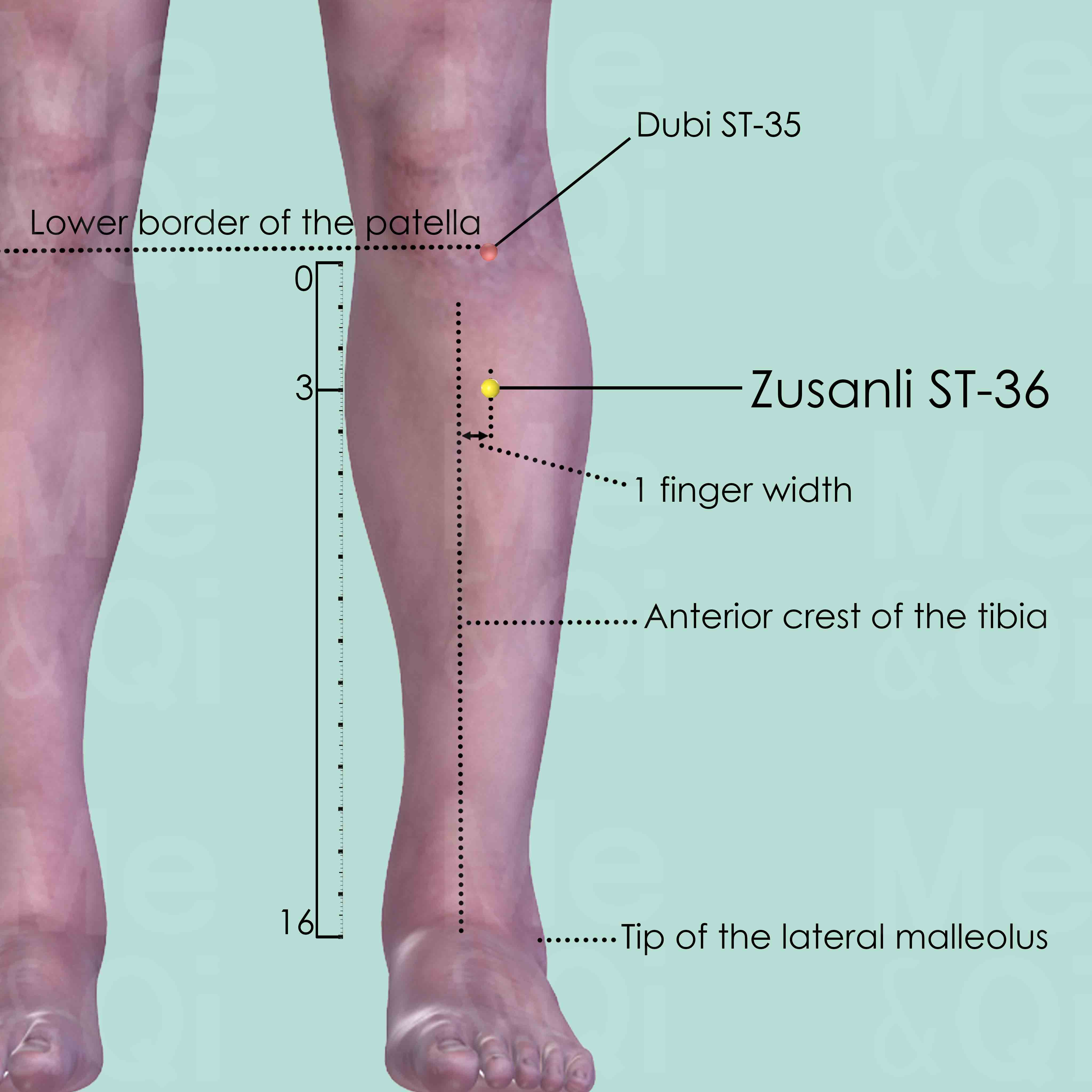
Zusanli ST-36
3 cun below Dubi ST-35, one finger breadth lateral to the anterior crest of the tibia, on the tibialis anterior muscle.
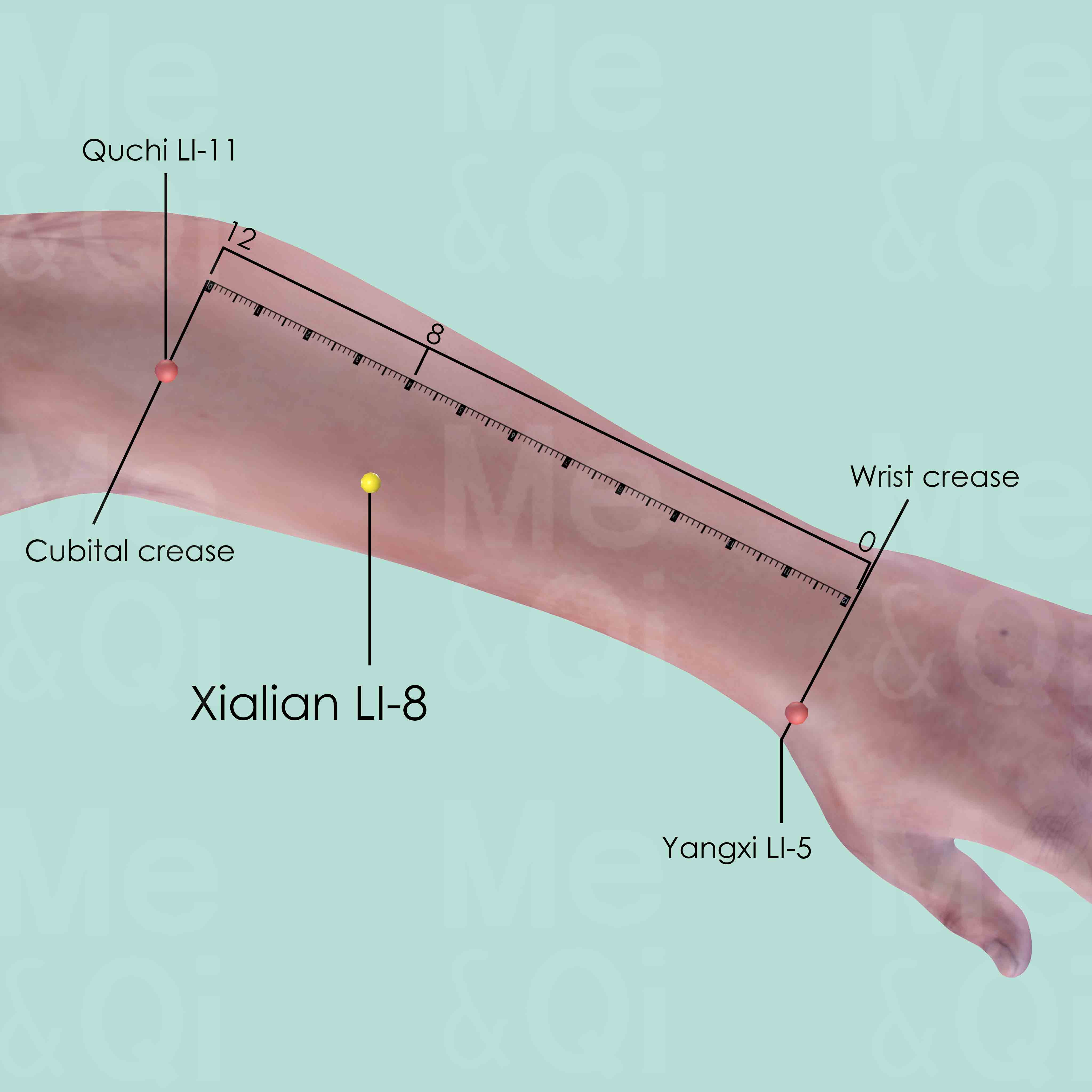
Xialian LI-8
When a fist is made, with the ulnar side downward and elbow flexed, the point is 4 cun distal to Quchi LI-11 of the line joining Yangxi LI-5 and Quchi LI-11.
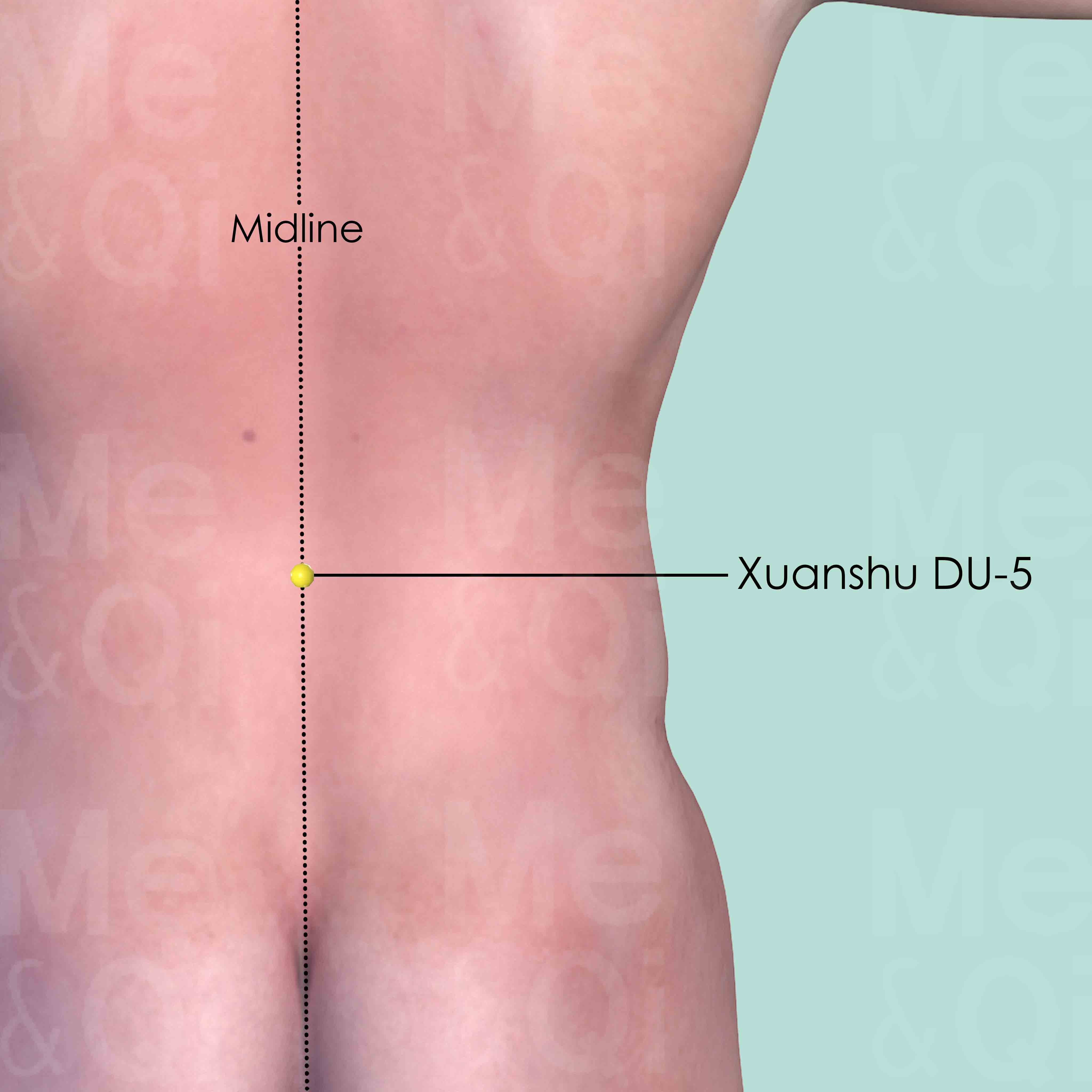
Xuanshu DU-5
On the back midline, in the depression below the spinous process of the 1st lumber vertebra. (L1)

